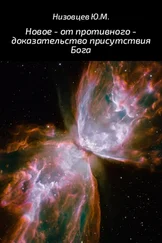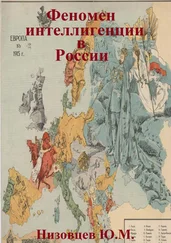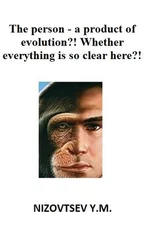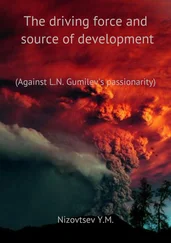Юрий Низовцев - Everything and nothingness
Здесь есть возможность читать онлайн «Юрий Низовцев - Everything and nothingness» — ознакомительный отрывок электронной книги совершенно бесплатно, а после прочтения отрывка купить полную версию. В некоторых случаях можно слушать аудио, скачать через торрент в формате fb2 и присутствует краткое содержание. Издательство: Array SelfPub.ru, Жанр: Философия, История, История, История, beginning_authors, Философия, Биология, Химия, Математика, Физика, Религиозная литература, Религиозная литература, на русском языке. Описание произведения, (предисловие) а так же отзывы посетителей доступны на портале библиотеки ЛибКат.
- Название:Everything and nothingness
- Автор:
- Издательство:Array SelfPub.ru
- Жанр:
- Год:неизвестен
- ISBN:нет данных
- Рейтинг книги:5 / 5. Голосов: 1
-
Избранное:Добавить в избранное
- Отзывы:
-
Ваша оценка:
- 100
- 1
- 2
- 3
- 4
- 5
Everything and nothingness: краткое содержание, описание и аннотация
Предлагаем к чтению аннотацию, описание, краткое содержание или предисловие (зависит от того, что написал сам автор книги «Everything and nothingness»). Если вы не нашли необходимую информацию о книге — напишите в комментариях, мы постараемся отыскать её.
Everything and nothingness — читать онлайн ознакомительный отрывок
Ниже представлен текст книги, разбитый по страницам. Система сохранения места последней прочитанной страницы, позволяет с удобством читать онлайн бесплатно книгу «Everything and nothingness», без необходимости каждый раз заново искать на чём Вы остановились. Поставьте закладку, и сможете в любой момент перейти на страницу, на которой закончили чтение.
Интервал:
Закладка:
This process lasts infinitely, inasmuch Uniform, as "supplier" of things, has no borders, and form-building abilities of the single consciousness are incessantly improved in beingness. Therefore the question of cognition should be put differently: whether is possible the limit to cognition of things by consciousness?
And the answer to it consists in lack of opportunity of something inaccessible to the single consciousness. inasmuch consciousness itself forms, as a result, beingness according to own understanding; but consciousness along with that uses the infinite "depth" of Uniform and variety of things from Uniform, thanks to what consciousness into own uncountable particles can infinitely develop changing itself with change of each of them.
In this respect the reality of the world can be considered as proved if not to rely only on the person who is just one of numerous representatives of consciousness in measurements of beingness, but to keep in mind consciousness, forming to itself beingness for life and development on the basis of Uniform in the finite infinitely what actually makes the meaning of this beingness.
Heidegger, contrary to Hegel, believes beingness as substantiality, which doesn't need any other entities: “Substantiality is the idea of Being to which the ontological characterization of the res extensa harks back. “Per substantium nihil aliud intelligere possumus, quam rem quae ita existit, ut nulla alia re indigeat ad existendum.” “By substance we can understand nothing else than an entity which is in such a way that it needs no other entity in order to be.” The being of a “substance” is characterized by not needing anything” [4, p. 125].
Feeling limitation of beingness constructed on thingness and not understanding from where things come as well as how things are retained in beingness, Heidegger, as well as most of thinkers up to him, comes to God: “Substantia quae nulla plane re indigeat unica tantum potest intelligi, nempe Deus (Substance, which isn't needing in any thing absolutely, can be thought only as one, namely God)… Alias vero omnes (res), non nisi ope concursus Dei existeri posse percipimus (But all other (things), we notice, can't exist differently as needing the help of God)… All entities other than God need to be “produced” in the widest sense and also to be sustained” [4, p. 125].
Thereby Heidegger believes that beingness is relatively autonomous structure which is made and sustained by God.
At the same time, believing this explanation of beingness by insufficient and banal, Heidegger comes back to the person, whose substance, in his opinion, is the existence in this reality: “Entities with Dasein's kind of Being cannot be conceived in terms of Reality and substantiality; we have expressed this by the thesis that the substance of man is existence. Yet if we have Interpreted existentiality as care and distinguished this form Reality. This does not signify that our existential analнtic as in end; we have merely allowed the intricate problems in the question of Being and its possible modes, and the question of the meaning of such modifications, to emerge more sharply: only if the understanding of Being is, do entities as entities become accessible; only if entities are of Dasein's kind of Being is the understanding of Being possible as an entity” [4, p. 255-256].
Heidegger's mistake consists that he tries to link beingness with existence of the person, whereas the person is only an intermediate form, some kind of sign, more precisely, the tool through which consciousness exists and acts, using his sense organs for realization of itself in the uncountable finite human and other lives, thereby acquiring not only the life, but also development on each stage, which is determined by itself individual consciousness.
We believe that beingness in the form of the copies of things from Uniform, merging in each individual consciousness in flow, motion, is formed by single consciousness through sense organs and processing centers of each carrier of consciousness. Thus in consciousness of the person, owing to loss a pause between positions of copying, emerges current time, space and copies of things, inasmuch themselves things are inseparable, or rather, they are merged in infinite Uniform.
Things in an information-frequency form, i.e. in the form of copies, are "allocated" consistently from Uniform, forming not a number of the forms existing together, not travelling wave, but only one form which is completely replaced with another close to previous, i.e. is updated with the interval which is required on updating, and so on.
This consistently updated frequency structure, of course, is not a thing in the true sense of the word – it is its prototype, inasmuch the passive, merged in Uniform, manages to be "allocate" in consistently changing form that means the temporal character of the projection and opportunity the further transformation of these discrete high-frequency wave changes to corpuscular, separate things.
In particular, these changing frequency formations become separate and rather steady only in consciousness of the living being, for example, person thanks to the connection in him consecutive positions (moments) of update of a holographic projection – this is the cause that things acquire motion and change in arising thereby space. If time (consciousness) disappears – there will be neither things, nor space.
Therefore Heidegger incorrectly qualifies the space: “Space is not in the subject, nor is the world in space” [4, p. 146].
A holographic projection of Uniform is the superhigh-frequency updated structure which is formed, being updated, by single consciousness in own set through sense organs of the living beings on the basis of Uniform and it is presented to each individual consciousness in own carrier in accordance with his sense organs, creating his "now".
We, as people, know only yourself and your sense organs, which present us beingness as temporal-spatial-corporeal world in motion in the three spatial dimensions. However space doesn't exist "under" this reality, presented to us, separately from time, things and living beings inasmuch living beings "produce" it on the basis of Uniform by own sense organs with the hidden help of the single consciousness.
At this, "velocity of flow" of time depends on the volume of information coming to the individual consciousness through sense organs, inasmuch own time of the person is the information process, representing itself the copying of material objects, surrounding of the person, by means of his sense organs in the form of irreversible sequence of the discrete, information-bearing durations, being merged in the human consciousness and in the consciousness of any living being into a picture of incessantly changing surrounding. And all these changes depend not on some arbitrary stream of things what is impossible for the passive, inasmuch information copies of things from Uniform are initially motionless and invariable, but these changes depend on consciousness: all things are identified and copied by consciousness in the sequence of its address to Uniform in accordance with its own form-building abilities.
With development of the living in more sophisticated and diverse beings the flow of time is accelerated, reaching the maximum values with the advent of civilization of reasonable beings, as a consequence their conscious actions. Growth of speed of emergence of new information and, accordingly, its volume leads, finally, a civilization to information collapse and disintegration. [16, chapter 5]
There are no living beings – carriers of consciousness, – there is no information process of copying also, i.e. exception of the living beings, or – consciousness out of beingness signifies impossibility of existence of beingness in any form.
Читать дальшеИнтервал:
Закладка:
Похожие книги на «Everything and nothingness»
Представляем Вашему вниманию похожие книги на «Everything and nothingness» списком для выбора. Мы отобрали схожую по названию и смыслу литературу в надежде предоставить читателям больше вариантов отыскать новые, интересные, ещё непрочитанные произведения.
Обсуждение, отзывы о книге «Everything and nothingness» и просто собственные мнения читателей. Оставьте ваши комментарии, напишите, что Вы думаете о произведении, его смысле или главных героях. Укажите что конкретно понравилось, а что нет, и почему Вы так считаете.












